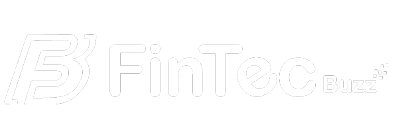Mergers and acquisitions (M&A) activity in the financial advice sector is rising with no indication of a slowdown. According to the National Association of Plan Advisors (NAPA), there were 75 announced transactions in the second quarter of 2024, representing a 15.4% increase compared to the same quarter in 2023. The industry is projected to grow by 3.4% in 2024 compared to the previous year.
In the context of mergers and acquisitions, it’s crucial to approach integration holistically, encompassing people, processes, and platforms. Unfortunately, many firms focus on only one or two of these elements, leading to a lack of cohesion and synergy in the newly formed organization. When aligning people, processes, and platforms seamlessly, firms can enhance their ability to maximize success and drive value, both internally and for clients, in the future.
People: merging minds, aligning teams
Merging two companies and their teams can pose significant transitional challenges. This was evident in my direct experience when Invesco merged five financial advice software companies into intelliflo in 2021. Establishing common objectives across all staff, particularly at the executive level, is crucial in mitigating these challenges. The new organization must achieve precise alignment and transparency across various areas, such as business goals, company culture, investment philosophy, operational processes, and client experience standards. Inconsistencies and disorganization among team members in any of these areas could lead to conflicts and unnecessary inefficiencies, potentially resulting in increased expenses and delays in critical workflows.
Processes: modernizing workflows
During a merger or acquisition, assessing existing processes and identifying necessary updates is crucial. Many organizations still rely on outdated processes that are five or even ten years old despite advancements in technology and changes in business objectives. Being open minded and detaching from the “old way of doing things” paves the way for establishing clear goals and principles which counteract the inertia of hanging on to outdated processes. Even though it may require significant time and effort, optimizing processes leveraging modern tools and objectives before the two entities are integrated can yield substantial time and resource savings in the future. This approach enables the newly combined firm to operate with greater efficiency and effectiveness right from the start.
Platforms: powering growth, personalizing client experiences
Once a firm has established its strategies, goals, and philosophies, it must determine the most suitable technology platforms to support them. This decision may involve maintaining a combination of technologies from both firms or investing in entirely new solutions. With advisors facing slim profit margins and increasing pressure to personalize client experiences, the strategic deployment of technology can significantly impact a firm’s growth and success. Technology has the potential to automate low-value, repetitive tasks and manage complex processes (such as rebalancing) at scale, thereby freeing up advisor time to focus on enhancing client satisfaction and outcomes.
The profound impact of technology is particularly evident in shaping the client experience, a critical area for any advisory firm. Instead of passively adapting to current technology solutions or relying on existing tools, advisors should step back and proactively conceptualize the optimal client journey they want to provide. Starting with a well thought out vision for the client experience will help make sure you get the technology right. This strategic approach ensures that technology aligns with the firm’s objectives, delivering a client experience that propels the firm’s success and distinguishes it from competitors.
Positioning your firm for lasting success
With the increasing momentum of M&A activity, advisors must fully commit to comprehensive integration across formerly independent firms in order to achieve positive results. This entails guaranteeing alignment among key stakeholders, implementing cutting-edge processes, and strategically harnessing technology platforms. Those who fulfill these requirements will successfully establish a resilient, streamlined, and competitive new firm that provides significant value to its clients.
Stay Ahead of the Financial Curve with Our Latest Fintech News Updates!

Nick Eatock, CEO, intelliflo and Jennifer Valdez, president of Americas, intelliflo
Nick Eatock is CEO of intelliflo, and Jennifer Valdez is President of Americas for intelliflo. intelliflo widens access to financial advice through leading technology that powers the financial advisory experience.
Nick Eatock
Nick Eatock is CEO of intelliflo, and Jennifer Valdez is President of Americas for intelliflo. intelliflo widens access to financial advice through leading technology that powers the financial advisory experience.



